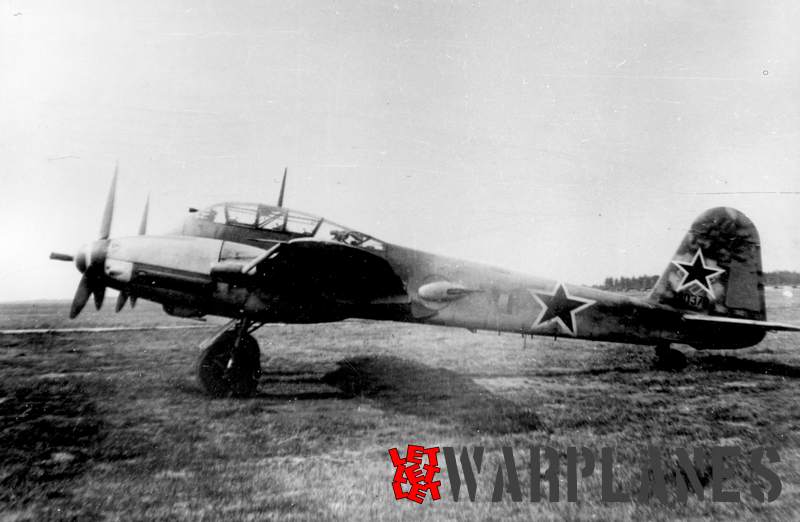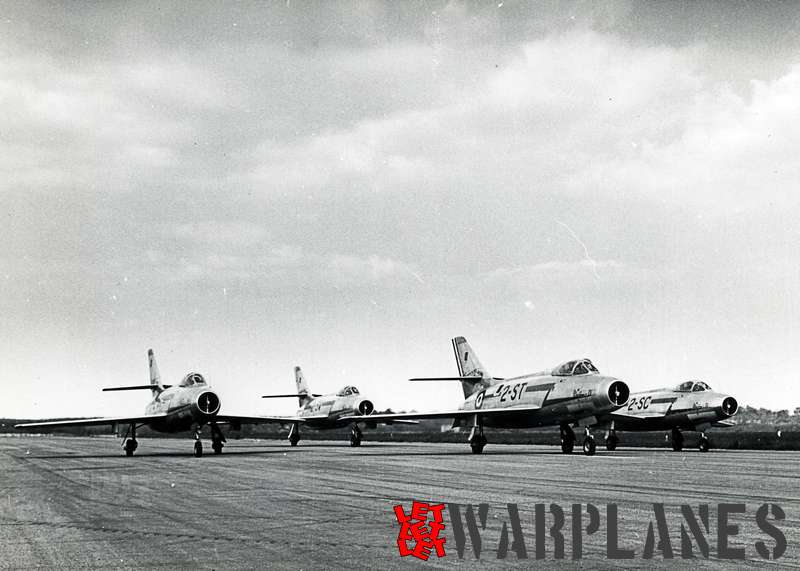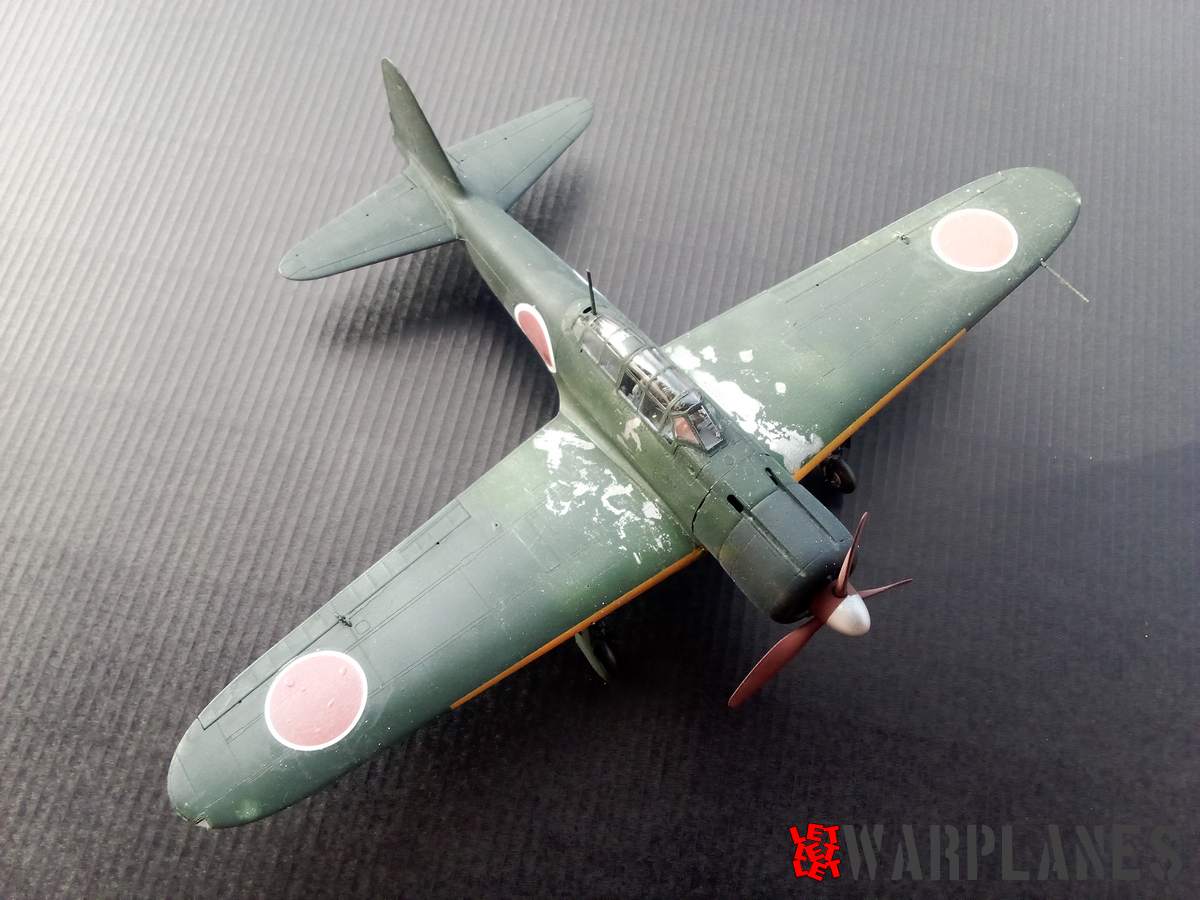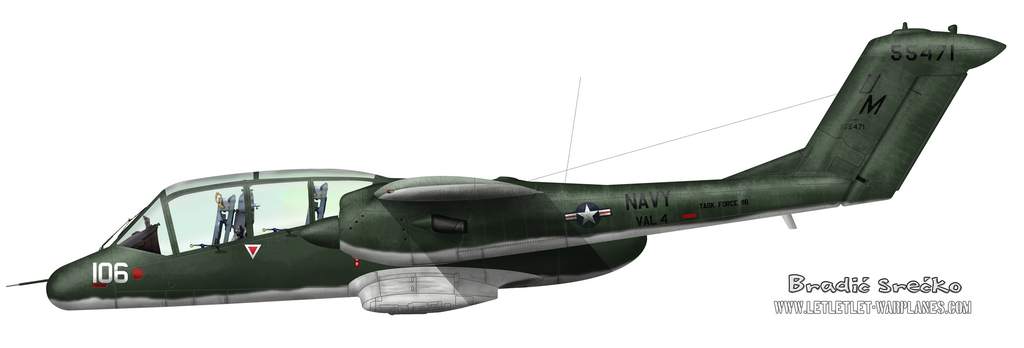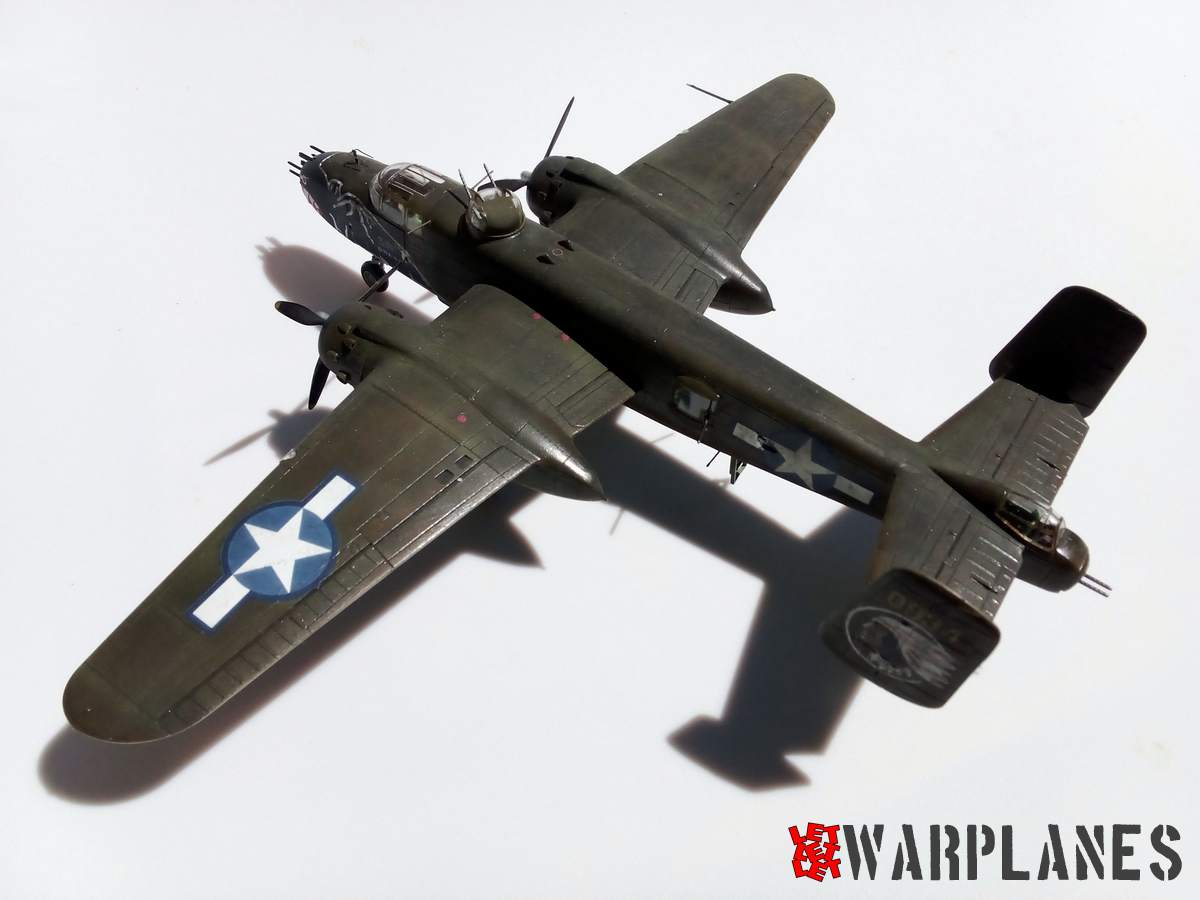French Strange Apparatus
Introduction:
French aircraft designers have by some people been regarded as ‘the second best in the World’. Except for aircraft with a conventional layout, French aircraft designers also knew how to design aircraft with a less conventional look. In this article we shall have a closer look at some peculiar and unorthodox aircraft from this country.
Photo 1
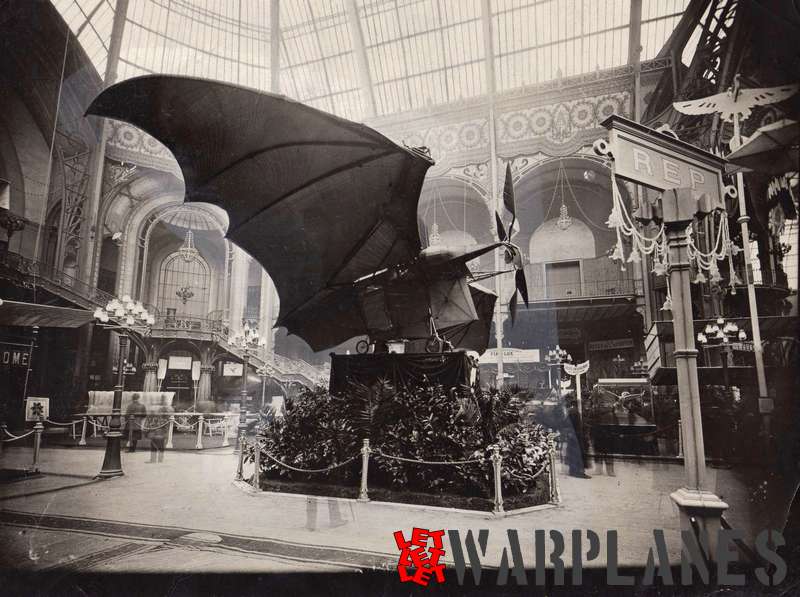
Photographed in the centre of Paris at the Grand Palace during the Salon Aéronautique of 1909: the Clement Ader Avion III. An earlier version, the Eolé is claimed to have made world’s first powered flight on 9 October 1890, although it was at 20 cm height only and uncontrolled by any forms of steering. As far as known the Avion III never flew, but its name was adopted in the French language as the name for Aircraft! This photo, being an original glass negative print, was used for publication in the Dutch magazine Avia Vliegwereld in the mid fifties. They only wanted to publish a photo of the Avion III without its background and they used white retouch paint to ‘white it out‘. Some fifty years later I purchased this image on an aviation fair (for 1 Euro!) and I carefully removed the paint by flushing with luke-warm water. The photo was completely restored, showing much new detail but around the Avion III a white haze can still be seen where the paint has irreversibly bound to the gelatin layer! This priceless little gem is now part of the Aviodrome Museum’s photo collection at Lelystad Airport, the Netherlands
Photo 2
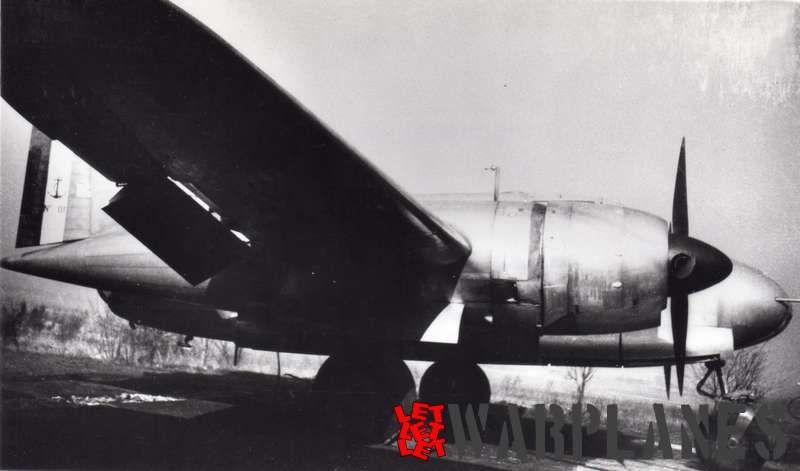
The Aerocentre NC.1070 was a twin-engine attack and torpedo bomber for the French navy (Aeronaval) that flew shortly after the war fitted with two Gnome-Rhone 14R radial piston engines of 1600 hp each. Its most important characteristics were a short, fat fuselage with double tail booms and a horizontal tailplane mounted on top of the vertical tail. As far as known it was hardly flown in this configuration!
Photo 3
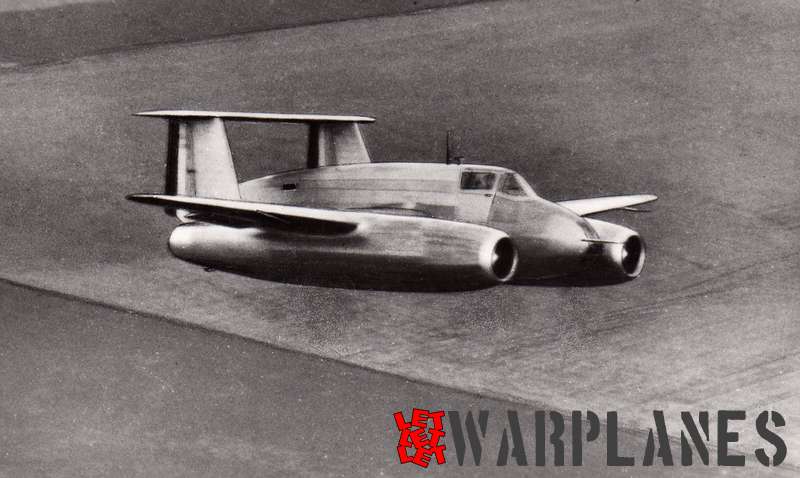
The same plane, now as the Aerocentre NC.1071 with the two piston engines replaced by two license-built Rolls Royce Nene jet engines to improve the plane’s performances. It made its first flight on 12 October 1948. During the Paris Airshow of 1948 it was proudly presented as the first French twin-jet, but its performances still were not very impressive and only one single prototype was built! We see here the NC.1071 in flight near Brétigny test centre.
Photo 4
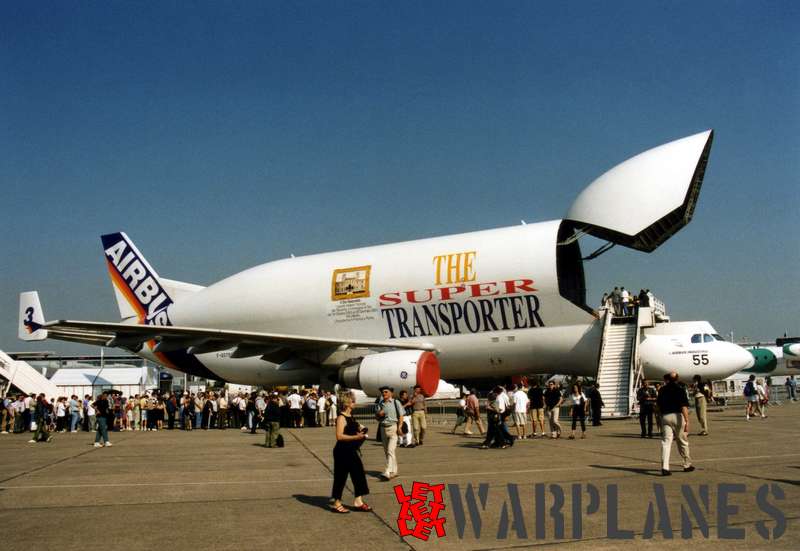
The Airbus Beluga was a modified Airbus A300 for the transport of Airbus fuselage sections. In total five converted A300’s were built for this purpose. The picture shows the first Beluga at Le Bourget during the Paris air Show of 2001 with the ‘whale mouth’ in open position for the public.
Photo 5

Although looking a conventional single-engine fighter, the Arsenal VB-10 had in fact two engines! The were placed in line in the nose and directly after the cockpit section, each driving a three bladed propeller. The project was already initiated before the start of the war in 1939, but the first prototype would fly directly after the war on 7 July 1945. Although a small order was placed by the French air force, only three were actually supplied and their career was very short.
Photo 6
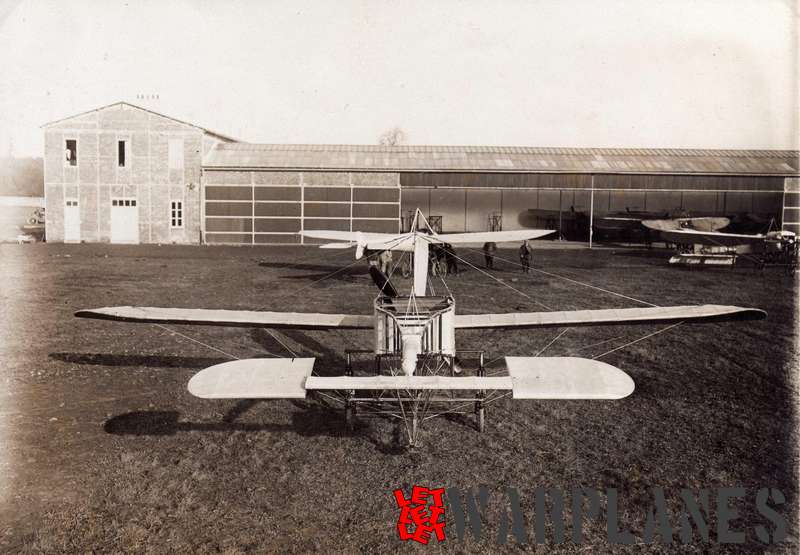
Louis Blériot is in general regarded as the ‘inventor’ of the single engine monoplane as we still know it today. Also Blériot experimented in 1912 with other configurations as shown in this type with canard layout, and powered by a Gnôme 70 hp engine. It was known as the Blériot XXXIII. This picture is an original print from the French photographer M. Branger.
Photo 7
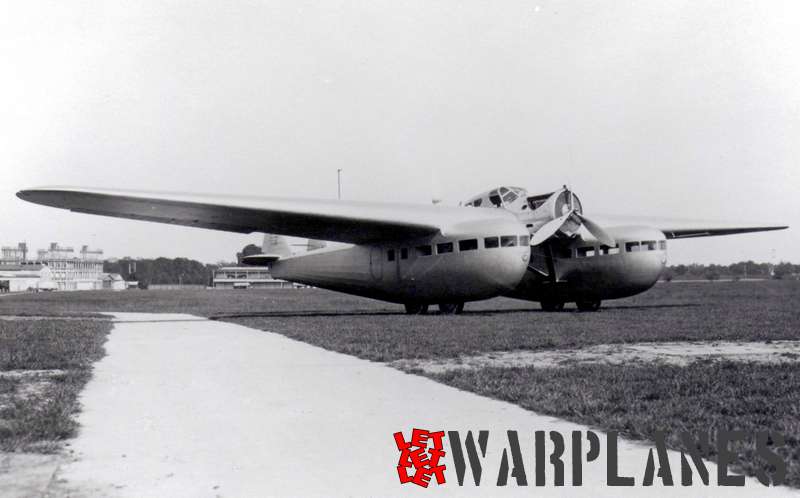
This strange, but surprisingly modern looking passenger plane is the Blériot Bl-125. It made its first flight on 9 March 1931. It featured two 550 hp Hispano-Suiza engines in the centre of fuselage section driving an pusher and a puller propeller. Construction was entirely of wood and only one was built.
Photo 8
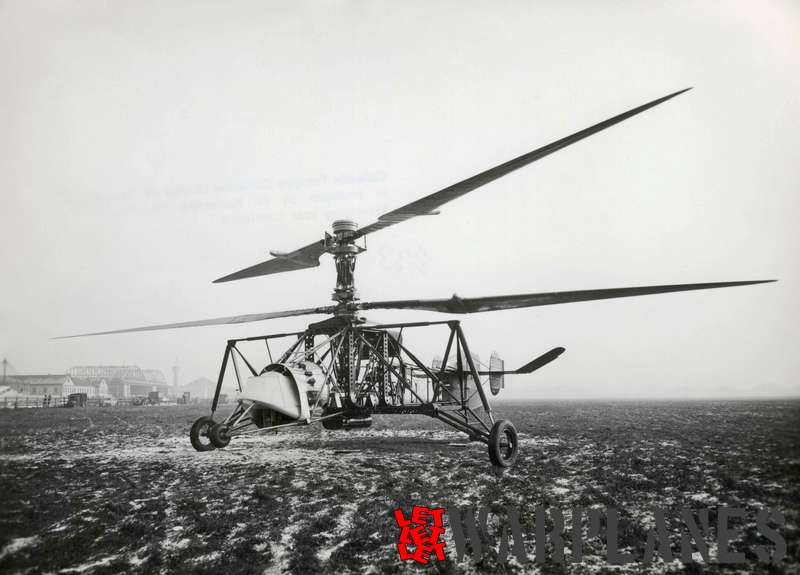
Louis Bréguet already experimented very early, in 1909, with helicopters, but without much success. In the thirties he resumed his helicopter work together with René Dorand with the Gyroplane as result. Although it was in 1933 badly damaged in a ground running accident it was rebuilt and improved. First flight was finally made in June 1935. In fact it was the first helicopter that could be fully controlled in flight and it soon set a number of world records. The rotors of the Gyroplane were placed in a so-called co-axial position. This is currently still in use by the Russian Kamov helicopters! The success of the Gyroplane was more or less overshadowed by the flights made by the Focke Wulf FW-61 helicopter. The Gyroplane was badly damaged in June 1939 during autorotation tests. Later it was destroyed by Allied bombing of the Villacoublay airfield in 1943.
Photo 9
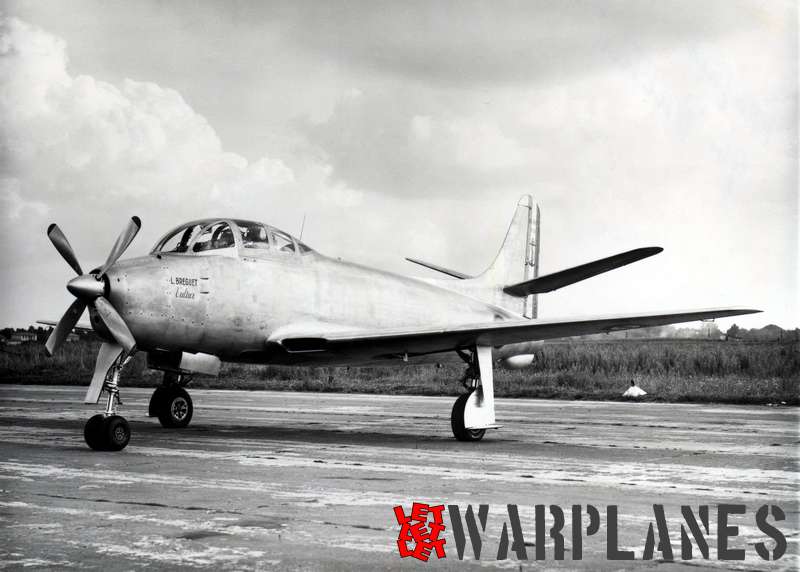
With the arrival of the first jet engines, many constructors saw as solution for its high fuel consumption the combination of jet and propeller. The Bréguet works designed shortly after the war the Br.960 Vultur, a two-seat naval attack plane powered by a nose mounted Armstrong Siddeley Mamba turboprop and a Rolls Royce Nene jet engine in the tail. It made its first flight on 3 August 1951 and two prototypes were constructed. The Vultur was not ordered for production, but it stood as a model for the later Bréguet Alizé turboprop powered anti submarine aircraft. The picture shows the first prototype.
Photo 10
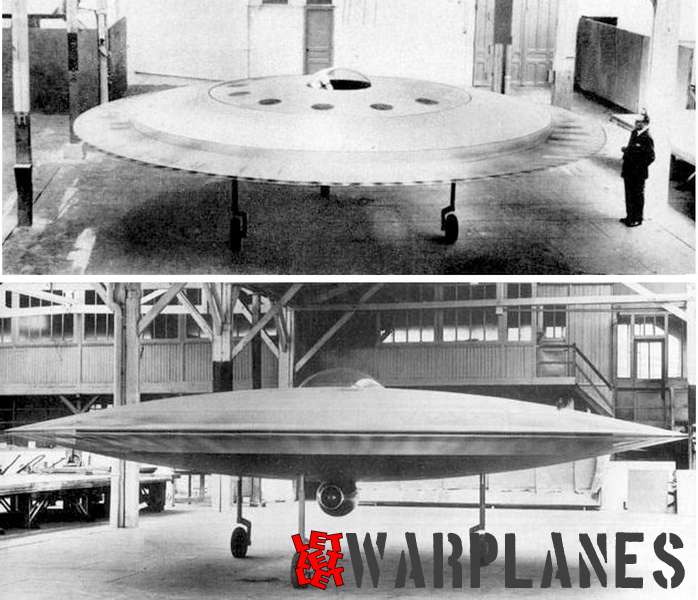
René Couzinet was a very talented aircraft constructor, famous for his pre-war ‘Arc-en-Ciel’ series of beautiful streamlined passenger planes. Unfortunately none of these were ever built in series. After the war Couzinet designed a Flying Saucer type aircraft as the ‘Disc Volante’ or Aerodyne RC 360 as it was officially designated. It was powered by a jet engine for forward thrust and six Lycoming piston engines to provide vertical thrust using rotating blades inside the disc shaped fuselage. It all seemed very sound, patents were applied for and in 1955-1956 even a mock-up was constructed. Unfortunately the premature death by suicide of Couzinet ended it all!
Photo 11
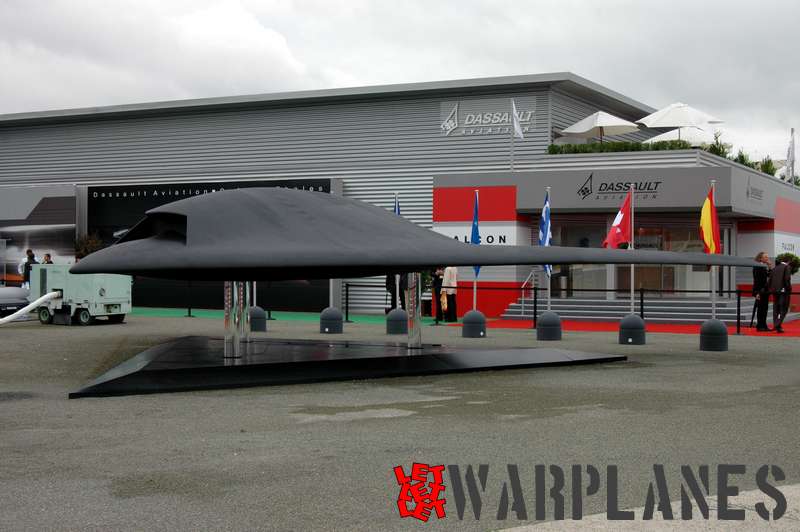
Until now, the United States seemed to have the monopoly on Stealth aircraft. Stealth means it has a very small so-called ‘radar-profile’ making it almost undetectable. However, also France experimented with this type of aircraft with a low radar visibility. Dassault built in 2000 a small unmanned vehicle, the AVE-D Petite Duc (or ‘Little Earl’). It was claimed to have the same radar profile of a sparrow! It was built as an Aéoronef de Validation Expérimentale – Discrétion or, in English, Experimental Assessment Aircraft – Stealth and could fly fully autonomously on its board computer. The Petite Duc was shown during the Paris Airshow at Le Bourget in 2007.
Photo 12
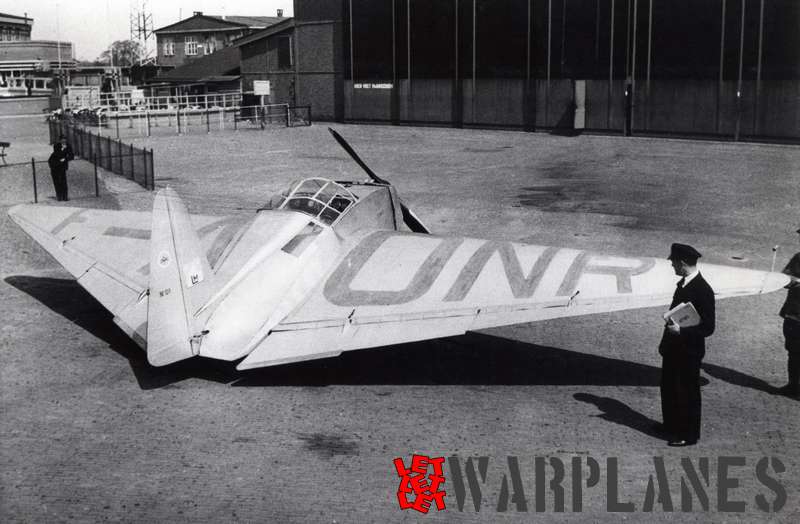
The AV-10 was the first airplane design of Charles Fauvel to be flown. Designed as a tailless side-by-side two-seater and equipped with a Pobjoy engine of 75 hp, it first flew on 10 February 1935. It was exhibited at the 25th Salon de L’Aéronautique at the Grand-Palais of Paris, on the 13th to the 29th of November 1936, along with other light planes of that period. In 1937, the AV-10 set a new altitude record for it’s category when it reached 5791 meters, and became the first government-certified flying wing. The AV-10 remained a unique prototype, allowing Charles Fauvel to expand his knowledge and expertise in designing flying wings. The AV-10 disappeared in 1940, when it was taken by German troops. The photo shows AV-10 F-AONR on 5 May 1936 at the Dutch airport Waalhaven in Rotterdam during a visit of its pilot René Paulhan to the Koolhoven aircraft plant.
Photo 13
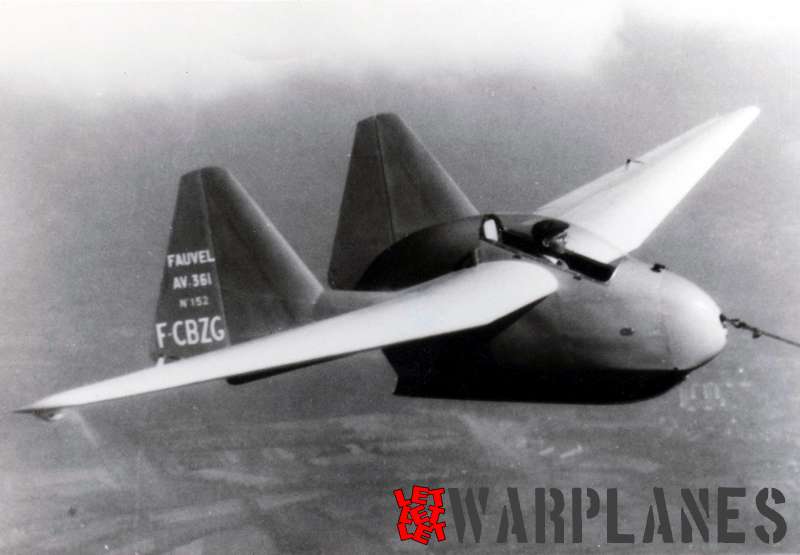
The AV-361 was a single seat tailless glider based on the AV-36 from 1951, built in series by Charles Fauvel. The picture shows no. 152 F-CBZG; still on the towing cable. Even today there are a number still flying around in Europe! Basically the glider was very easy and forgiving to fly with flight characteristics similar to a glider with a conventional lay-out like the Schleicher Ka-6 or Ka-8. Best glide ratio at 85 km/h airspeed is 1:30, only slightly less than the 1:35 of a modern PZL-Bielsco Junior glider.
Photo 14
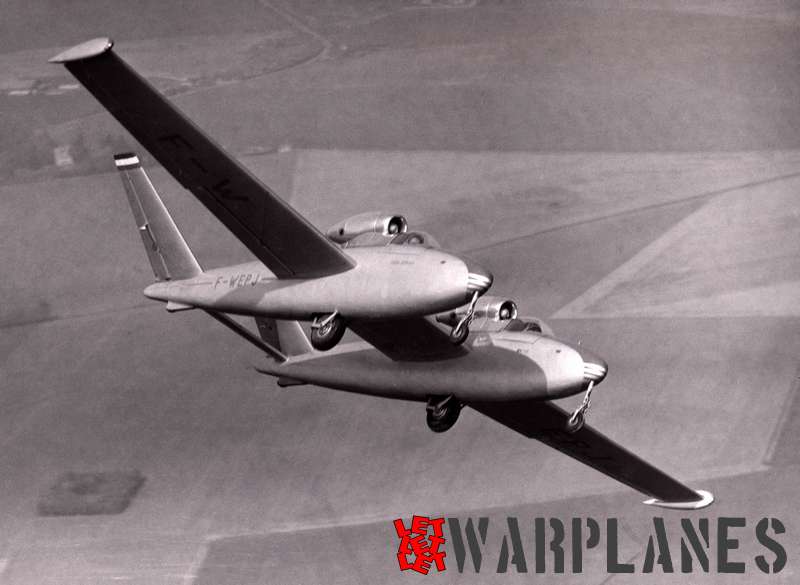
Just put together two gliders by connecting the wings and tailplane and put a small jet engine on top of each part. That sounds crazy, but this is how the Fouga Gemeaux was created! It was a creation from the aircraft designers Rober Castello and Pierre Mauboussin. Basically the double powered glider was used to obtain in-flight information of the use of various types of small jet engines. The Gemeaux (meaning ‘Twins’) flew in various forms with various engines. First flight took place on 6 March 1951.This official Fouga photo shows the first version Gemeaux I with two Turboméca Piméné.
Photo 15
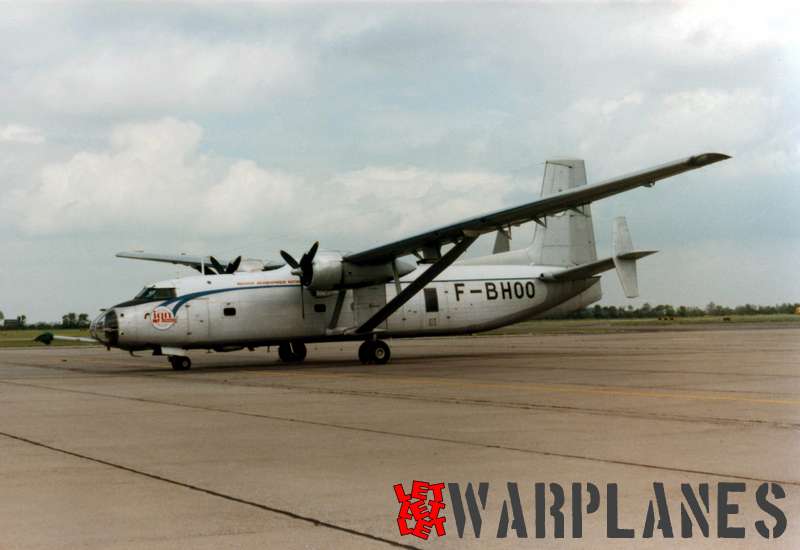
The Hurel Dubois HD.34 was a twin engine surveillance plane with wings having an extreme large aspect ratio. This resulted in a wing span that was more than twice the fuselage length! The wing was tested earlier on a smaller scale flying model, the HD.10. The HD.34 was fitted with two Wright Cyclone radial piston engines and the very large wing made it possible to fly at a very low speed of slightly above 100 km/h; perfect for aerial survey work with high-resolution cameras. A small fleet of eight was used by the IGN (Institute Geographique National) from the late fifties to the early eighties. F-BHOO, the HD.34 no. 1, is seen here on 13 May 1983 at Rotterdam airport for aerial survey contract work alongside the Dutch coast.
Photo 16
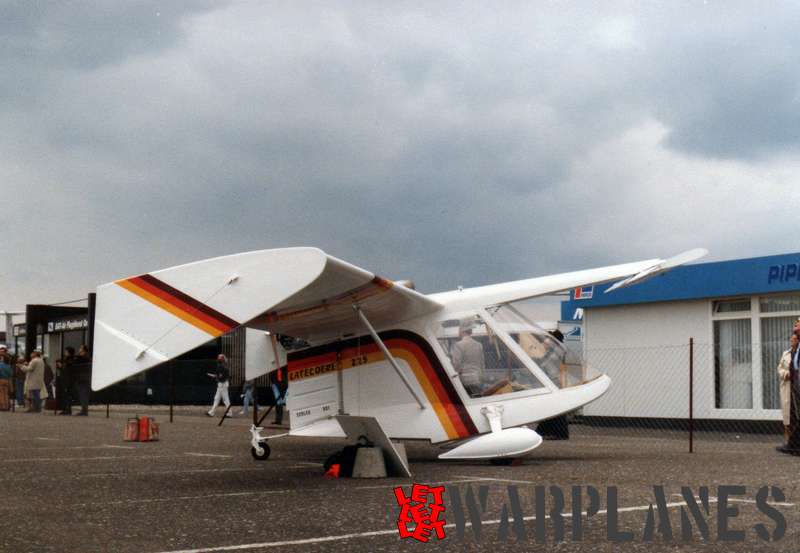
The Latécoère 225 F-PZLM was in fact the last type bearing the famous Latécoère name, although it had little to do with the original works carrying this name. It was a design by Paul Legrand for an ultra-light tailless amphibian. It never passed the prototype stage and only one was built. It is shown here at Le Bourget. It is currently on display at the seaplane museum in Biscarrosse.
Photo 17

René Leduc was well known for his experiments with ram-jet propulsion; a jet engine without any rotating parts. He already started his experiments before the war, but the first manned model would fly after the war as the Leduc 0.10 that could only fly when air-launched by a mother plane. The next type, the Leduc 0.21 was fitted with a small jet engine within the ramjet and although it still had to be launched by a mother plane, it could fly on the power of the jet engine only. Several launches were made with ignited ramjet but structural limitations prevented it to fly at very high speed. It was strictly a research plane, but it was developed into the supersonic Leduc 0.22.
Photo 18

This is the result of further development of the Leduc 0.21; the supersonic Leduc 0.22. First flown on 26 December 1956 on turbojet power alone, the ramjet was finally fired on the 34th flight, on 18 May 1957. Another 80 flights took place before the project was cancelled. It was designed to reach speeds of more than twice the speed of sound, but in fact it never flew beyond Mach 1. A second prototype was under construction but never completed. The 0.22 is on display in the Museé de l’ Air at Le Bourget airport.
Photo 19
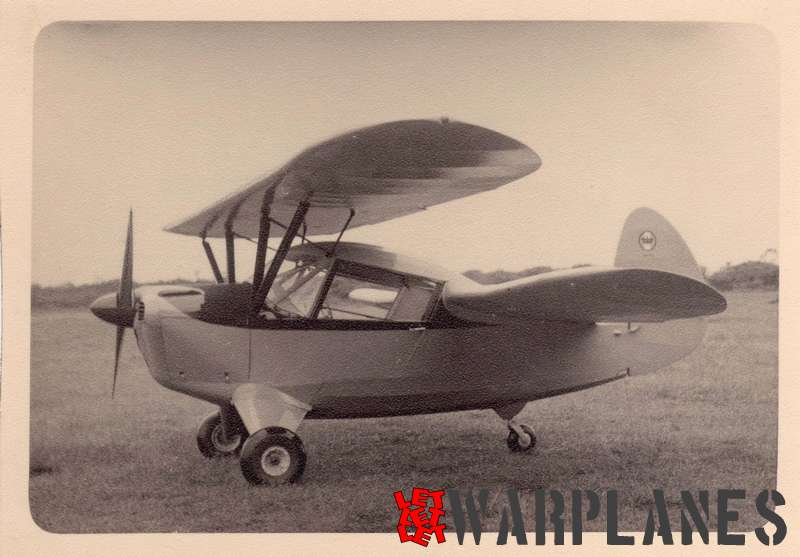
Henry Mignet designed in the early thirties a number of small single seat sports-planes that could be easily home-built, know as the Pou-du-Ciel (‘Sky louse’). It became quite popular and with its tandem wings it was easy to fly. However, a number of fatal crashes gave it a more or less dangerous reputation. In spite of this it was built in many variants, also after the war by a number of professional and amateur builders. The photo shows the Mignet HM.290 with a closed cabin from 1945.
Photo 20
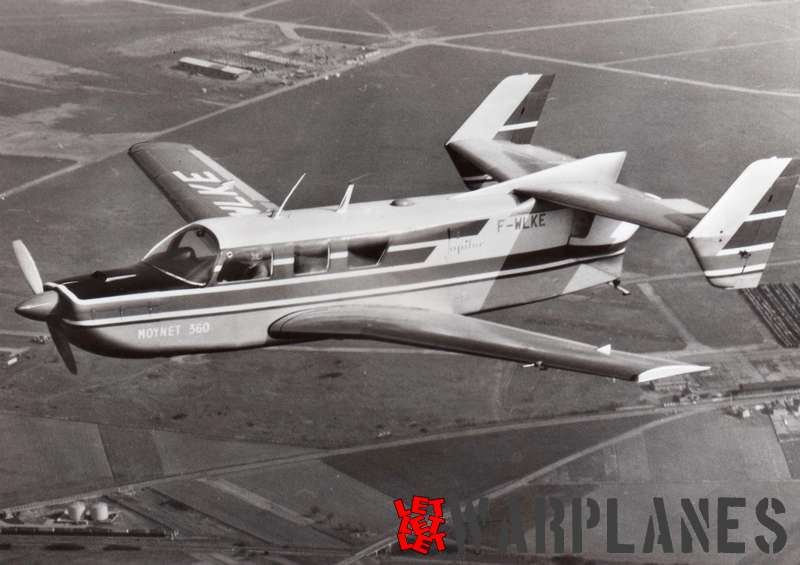
The Moynet 360 Jupiter was a small executive plane with a capacity of up to seven passengers built in France in the 1960s. It had an unusual configuration of two engines mounted in nose and tail driving a puller and a pusher propeller with a single fuselage configuration. In fact it was the same configuration as used in the Second World War on the Dornier Do 335 fighter! Two prototypes were produced with registrations F-WLKE and F-WLKY, the second having more powerful engines. No further sales were made of this unusual type and further work was soon stopped. The works photo shows the first prototype F-WLKE with feathered front propeller.
Photo 21
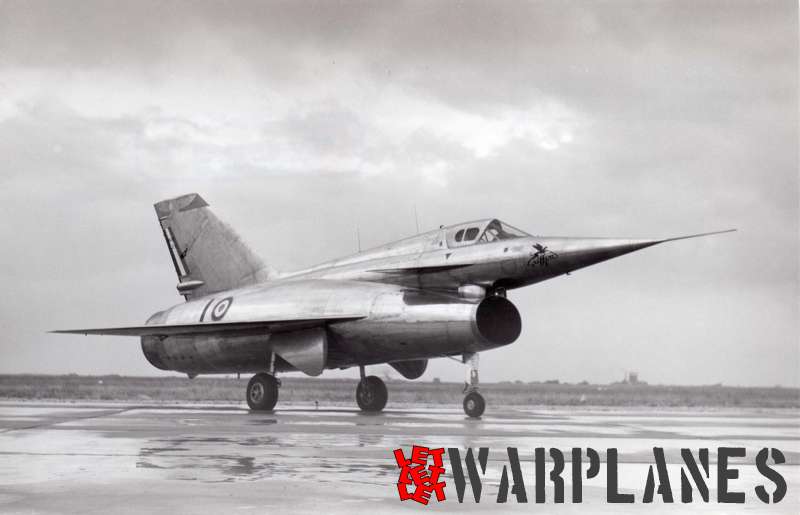
The Nord Griffon was a target defense interceptor with mixed propulsion. It normally flew on the power of a SNECMA Atar jet engine, but to boost performances it was also fitted with a ramjet engine. The Griffon had a very unconventional shape with delta wings combined with forward canard stabilizers and an air intake for both jet and ramjet under the nose in F-16 style. The first Griffon, without the ramjet, flew on 20 September 1955. A second prototype had both engines fitted and flew for the first time on 23 January 1957 with the well-known test pilot André Turcat at the controls. Although it had excellent flying performances all work was stopped after some 200 flights. The type lost eventually from the Dassault Mirage III. It is little known that the last number of test flights were funded by the U.S. Air Force! The Griffon II is now exhibited in the Musée de l’ Air at Le Bourget. The picture shows the second prototype.
Photo 22
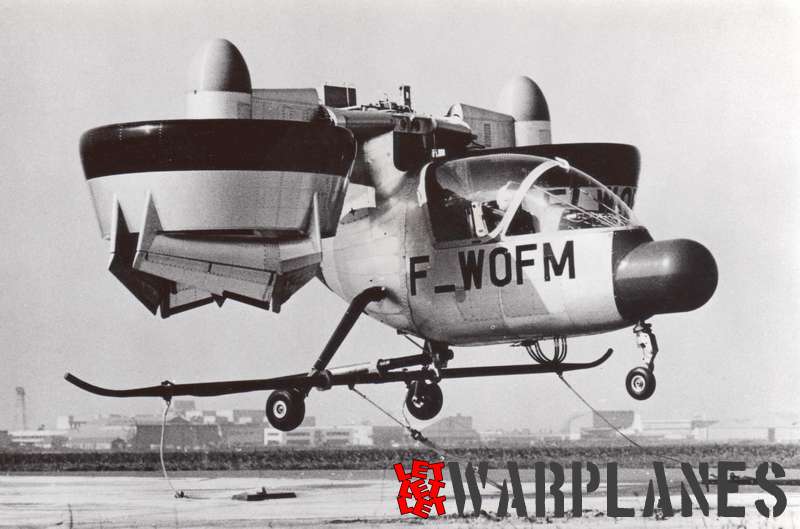
The Nord 500 was a proof-of-concept model for a ducted tilt-wing passenger plane. It was a small single seat research vehicle of which two were built. One was for mechanical and aerodynamic testing on the ground which never really flew. The second one made its first fight in July 1968, although tethered with steel cables. It was also tested in a wind tunnel but the whole program was suspended before it could make its first free un-tethered flight.
Photo 23
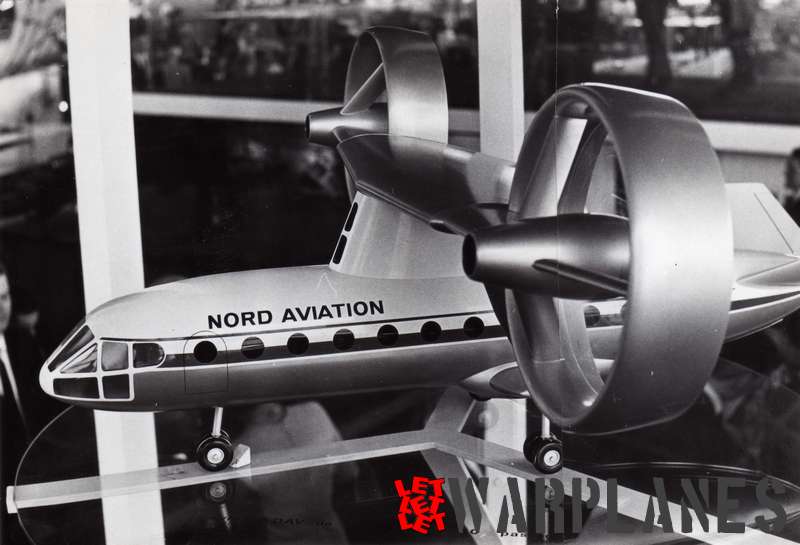
This was the final goal of the Nord 500 experiments: a larger ducted fan tilt-wing plane intended to fly passengers from city centers to an airport. The project was named ‘Rocade’ and a scale model was shown in public. It was never built…….
Photo 24
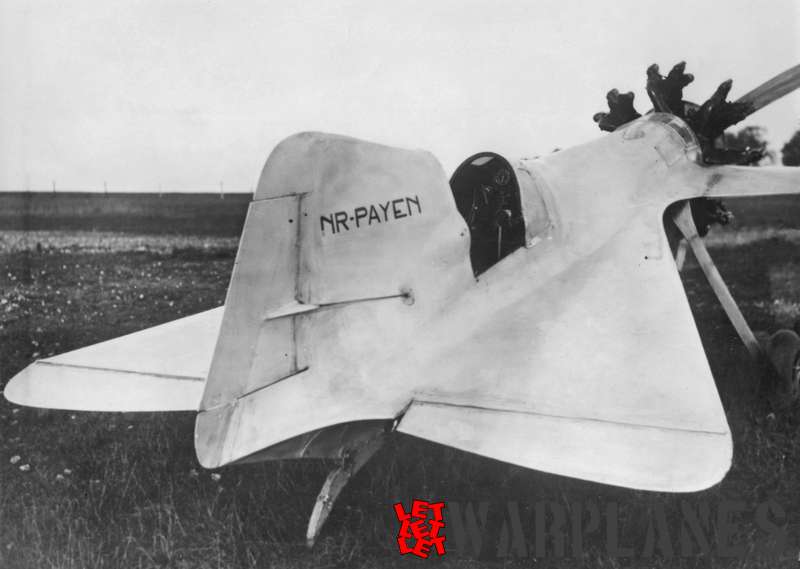
The French aircraft engineer Roland Payen was as a teenage boy very impressed by the flying abilities of a simple paper dart. Later he put this idea in practice as an aeronautical designer and he already built in the thirties a small delta plane fitted with a radial engine in the nose with two canard wings for additional stability and control. Payen’s delta, the Pa.100 was intended as a racing plane to participate in the famous Coupe Deutsch de la Meurthe. This was a race of 1000 km over a closed circuit of 100 km. Unfortunately the Pa.100 was badly damaged following a crash a few days after its first flight on 17 April 1935 and it never flew again.
Photo 25
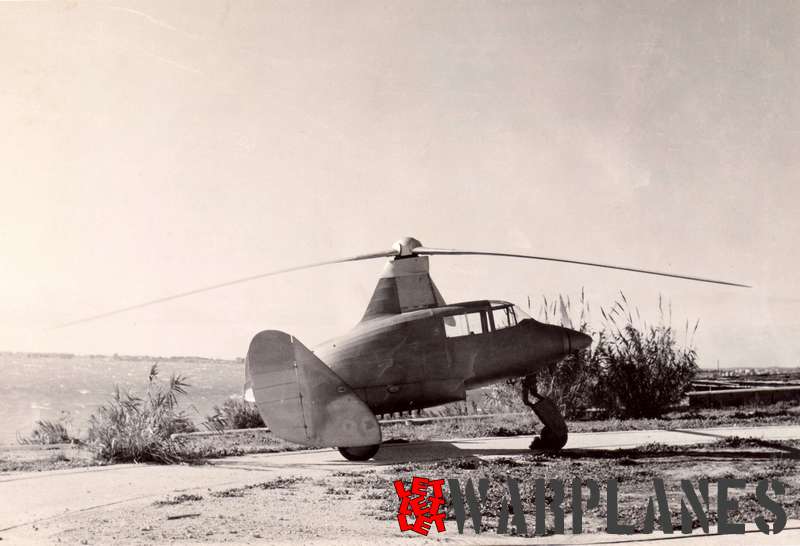
The SE.700 was intended as a multi-seat autogiro designed by S.N.C.A.S.E. under direction of Pierre Mercier and Pierre Renoux. Test pilot Henri Stakenburg made in May 1943 the first flight. After solving a number of technical problems flight testing was resumed after the war, but only one single copy of this very unusual plane was built.
Photo 26

The Sud-Est SE.5000 Baroudeur looked quite conventional, but in fact it lacked one thing similar types had: an undercarriage. Goal of Sud-Est was to build a lightweight fighter-bomber that started from a rocket-propelled starting trolley and landed on retractable skids. The absence of wheels would substantially save weight. It could operate from small grass fields and even on its skids it could taxi, although only in a straight line! In total three SE.5000’s were built and evaluated plus another two of an improved version as SE.5003 before the French government lost its interest.
Photo 27
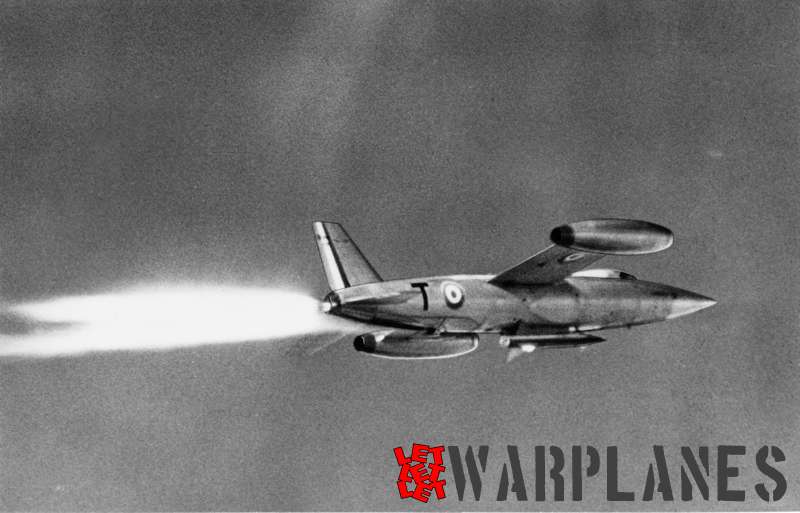
One of the most spectacular fighters with mixed propulsion was the S.N.C.A.S.O. Trident.
It had a long streamlined fuselage resembling that of the U.S. F-104 Starfighter. It also had, just like the F-104 very short and thin wings. Here, the similarity ended! The Trident had two wing-tip mounted jet engines and a powerful rocket engine in the aft fuselage. The first prototype SO.9000 Trident I made its first flight on 2 March 1953 with test pilot Jaques Guignard at the controls. As SO.9050 Trident II production was started, but the whole program was cancelled in favour of the more flexible Dassault Mirage. On full power the Trident could reach a speed of 1700 km/h, but only for a few minutes! The pictures shows the first SO.9050 on full power with all engines. It was fitted with a dummy Matra air-to-air missile.
Photo 28

The SFCA Lignel was a small very unusual sports plane with double wings. A small number was built before the war and some even survived until after the war. Even today one of the SFCA double wing sports planes is still flying at La-Ferté-Alais at the Collection Salis. Louis Clément was after the war a flying Town Major who gave in the Lignel F-BAIC very well-known flight demonstrations and he was a well respected guest on many airshows of that time. Unfortunately he was tragically killed in a flying accident one day after he had flown his Lignel at the 1955 ILSY airshow in the Netherlands. The crash was caused by structural wing failure. The picture shows Louis Clément flying his machine ‘hands free’!
Photo 29
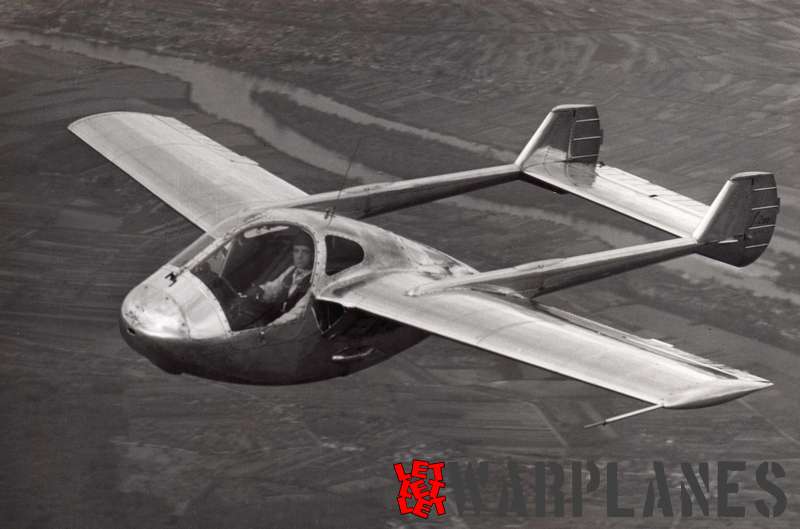
The SIPA S.200 Minijet was a small elementary trainer fitted with a jet engine. Most characteristic features were its twin-boom tails and the side-by-side cockpit for student and instructor. It made its first flight on 14 January 1952 by Roger Launay. Although the S.200 flew very well and was extensively demonstrated no production orders followed and only a few (six in total) were built. One was purchased by an American aircraft broker and made airworthy again with the intention to put it into production. It flew again in the summer of 1993 but final plans for production never materialized
Photo 30
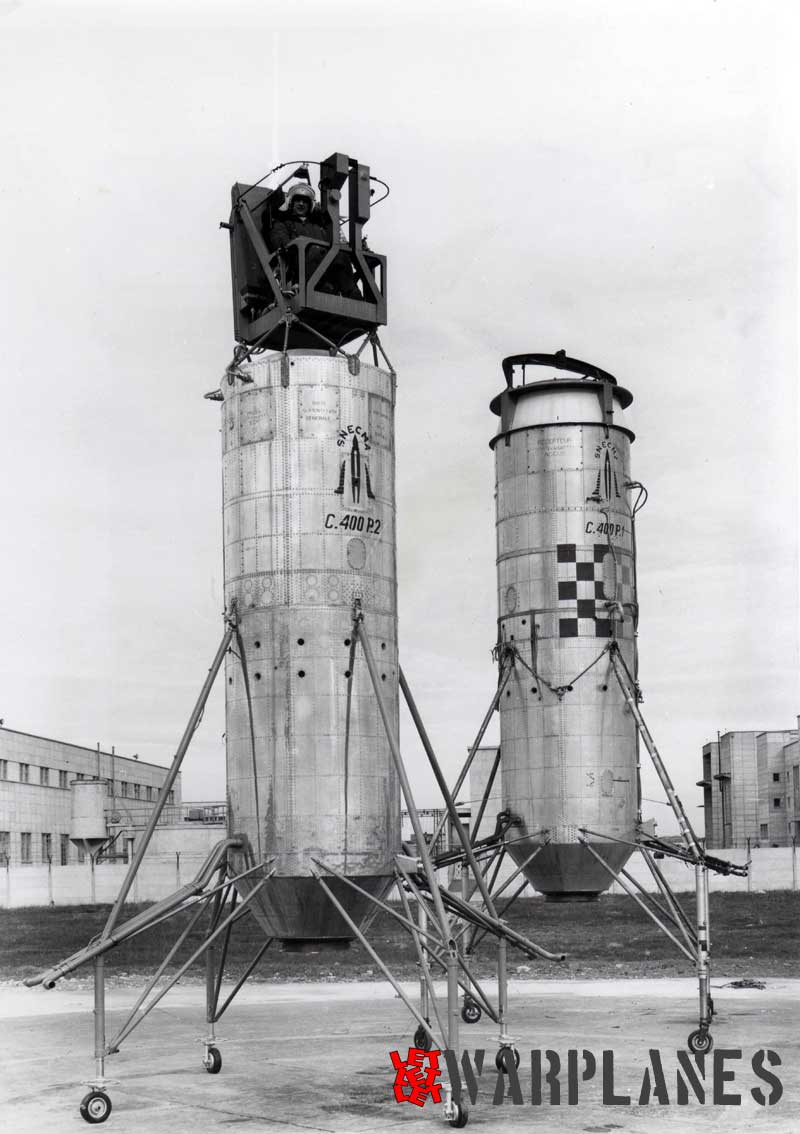
The SNECMA C.400.P1 and C.400.P2 Atar Volante were respectively an unmanned and a manned research vessel for the investigation of vertical take offs and landings. In fact these strange contraptions were nothing more than an upright flying Atar jet engine. The manned C.400.P2 was fitted with an ejector seat on top of it with the pilot sitting in the open. With both contraptions extensive test flights were made. First un-tethered manned flight with the C.400.P2 was made on 14 May 1957 by test pilot August Morel. The manned C.400.P2 is now on exhibit at the Musée de l’Air at Le Bourget.
Photo 31

The test results obtained with the Atar Volante were used for an operational ring-winged VTOL jet fighter prototype known as the SNECMA C.450 Coléoptère. Sitting on its tail supported by four small wheels in could take off and land vertically. After take off it could transfer to normal horizontal flight. This highly unusual and unorthodox VTOL aircraft made its first take off on 6 May 1959 by August Morel. All went well until it made its first transition to horizontal flight on 25 June 1959. Pilot Morel lost control and had to eject at an altitude of only 75 m. He survived, but serious back injure ended his career as a test pilot. After the crash the program was cancelled.
Nico Braas


